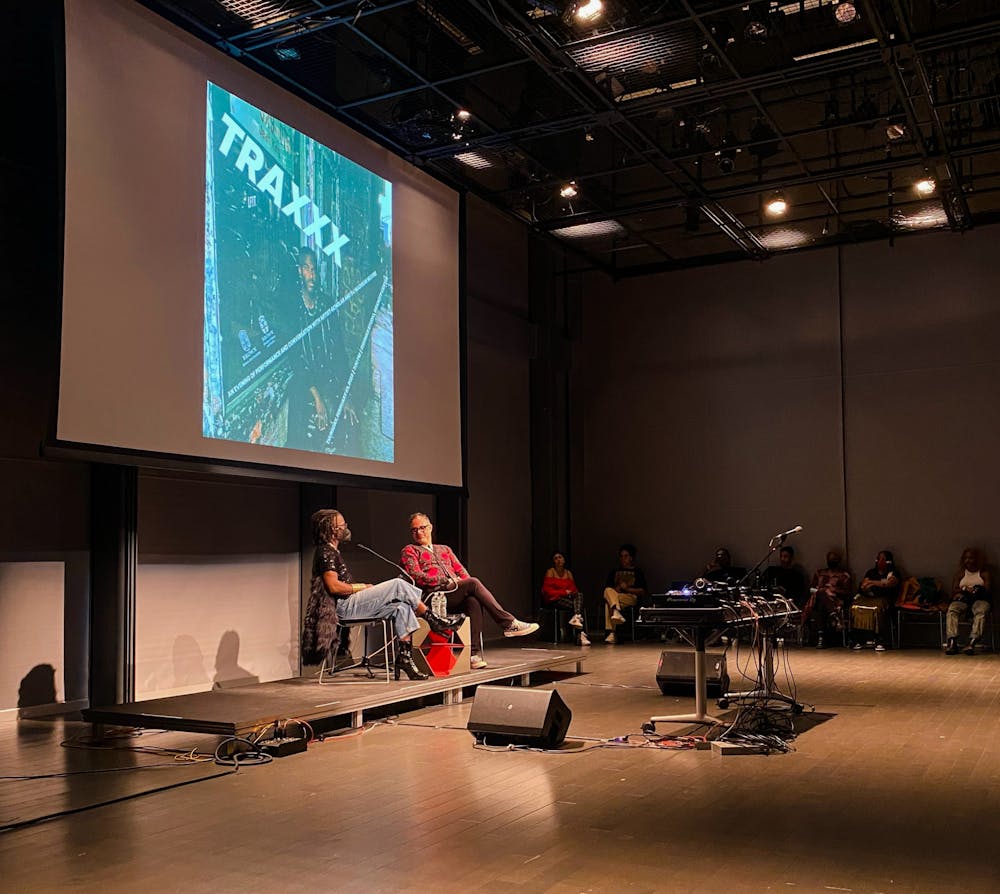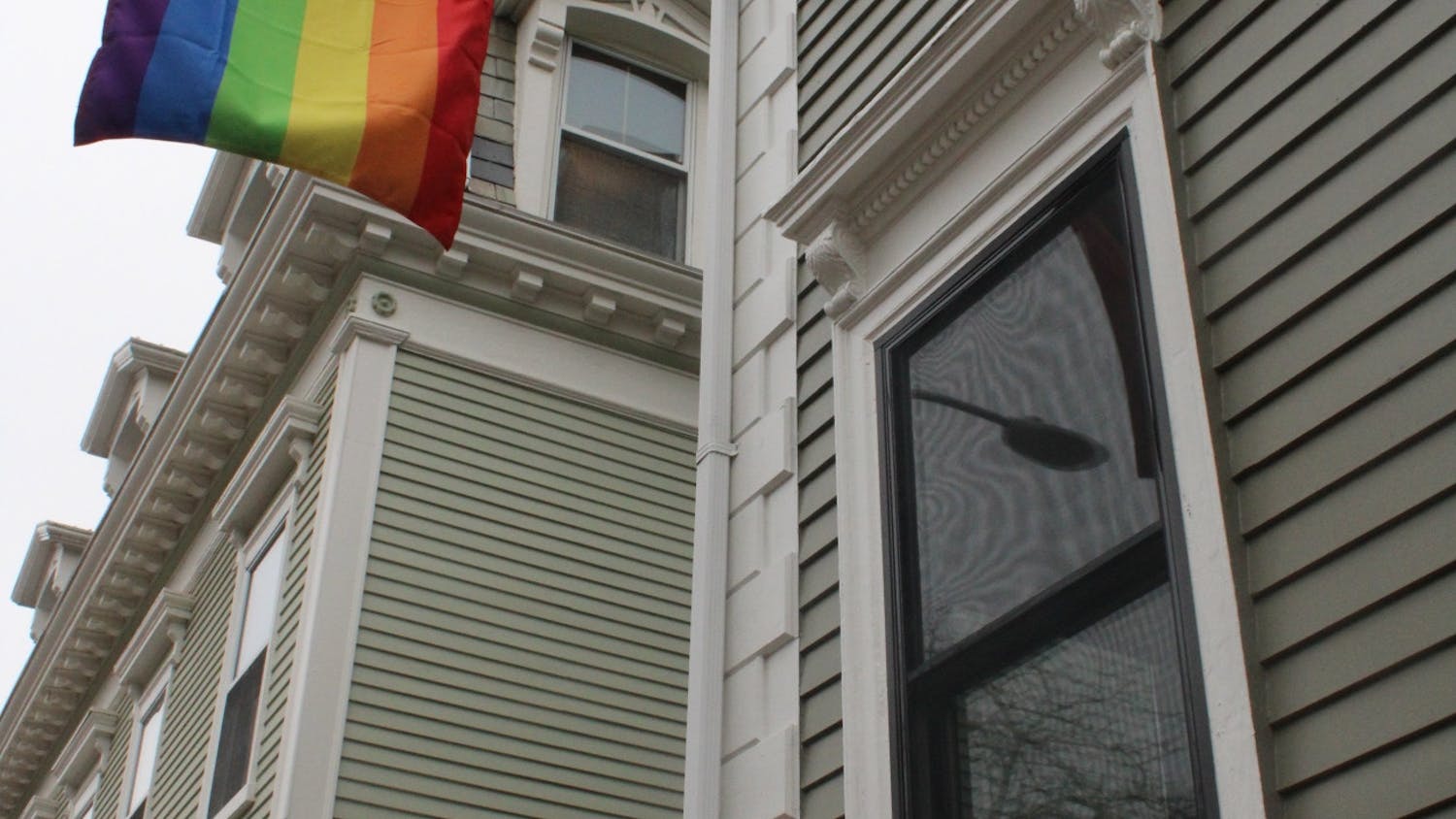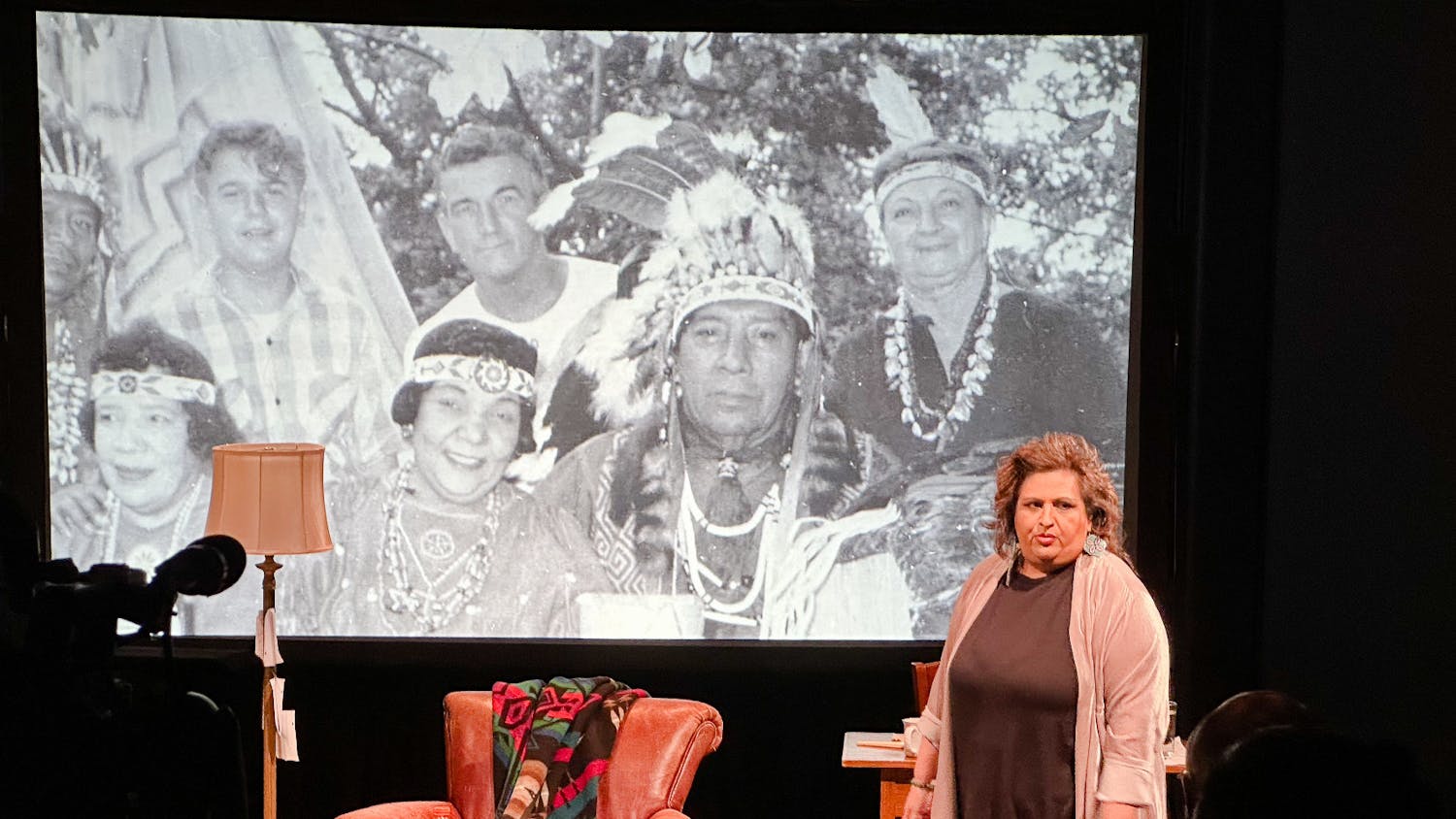The Brown Arts Institute and Department of Modern Culture and Media hosted TRAXXX, an event consisting of a performance by artist-scholar and DJ madison moore followed by a conversation with Professor of Modern Culture and Media Alexander Weheliye, at the Granoff Center for the Creative Arts Thursday.
moore, who is an assistant professor of critical studies at the Roski School of Art and Design at the University of Southern California, creates work that investigates “the aesthetic, sonic and spatial strategies queer and trans people of color use to both survive and thrive in the face of rolling catastrophe,” according to the event description. While piecing tracks together, moore asks themself, “Does this make me want to get up and dance?” they said at the event.
Audience members were invited to dance as moore performed for an hour. Their performance sequenced different tracks, pulling from popular music and incorporating voice recordings. Behind the turntable, footage of 1970s and 1980s clubgoers in Black, queer nightclubs mixed with vibrant techno visuals.
The event followed a discussion earlier in the day between moore and students in the graduate course “Frequencies of Black Life,” taught through the Brown Arts Institute for students at Brown and Princeton. The course is taught by Weheliye in conjunction with Tina Campt, professor of humanities at Princeton.
The course has three “thematic strands,” one of which is musical “frequency in relation to Black sound,” Weheliye said. “It made sense to invite” moore considering the thematic focus of the course and the importance of bridging “the divide between scholarship and artistic practice” within modern culture and media and higher education overall.
“It was important for the students in the class to see someone who is a scholar but also a practitioner,” Weheliye said.
Audience member David Carre thought “the space felt very Black and queer” at the event.
They found it “interesting to think about the marriage of theory and praxis,” something moore also addressed in the conversation with Weheliye. Academia does not always embrace “fugitive practices, yet here we are thinking through what it means to keep techno Black and queer” from scholarly and artistic perspectives, they added.
During their performance, moore thought about Black and queer nightlife through track sequencing, they said in their conversation with Weheliye. When thinking about the disappearance of Black and queer nightlife, sound systems also function as a space of worldbuilding and togetherness, they explained.
“Club spaces have always been really important … in terms of how one perceives sound,” Weheliye said. Throughout “Black, queer (and) trans histories,” clubs have also functioned as “a safe space.”
There is a challenge in representing “subcultural spaces without spectacularizing or giving away too much,” moore said. Weheliye thinks that means “preserving those spaces while at the same time building on them” instead of just recreating them.
For Amon Pierson, a graduate student at Princeton, hearing moore discuss disappearing nightlife spaces and their “ephemeral nature” made him think about “the importance of having these spaces, but also the fact that they’re not supposed to last forever.”
moore said they endeavor to represent the embodied experience of music and nightlife by incorporating interviews into their tracks. “The most beautiful thing is people sharing their club experiences,” they said.
“That sense of embodiment that you get from inhabiting the club space is really special, and I think that’s something that we should cherish more,” Pierson said.





